C.M. Rosens's Blog, page 7
May 19, 2025
Author Spotlight ~ Blog Tour: Sandy Butchers
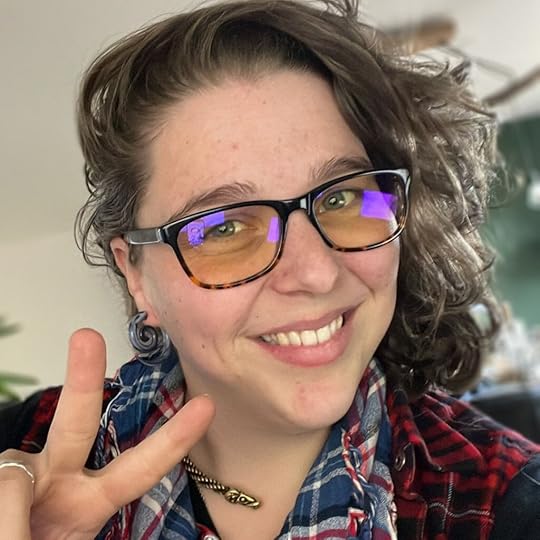
Sandy (she/her) Butchers’ life has been like a giant cake but instead of ingredients like sugar, spice, and everything nice, her cake was layered with travel, exploration, myth, and folklore. In a time span of only 5 years, she visited Iceland, Norway, Sweden, Poland, and Scotland, and decided to live 350km above the arctic circle in Finland for a year.
There, in the company of the Northern Lights, the magic happened: Sandy started her first full-length novel, inspired by the myths and folklore she found herself surrounded by in real-world situations.
Today, Sandy works as a freelance artist for clients such as Urano Publishing USA, Crit Harder!, and Authors & Dragons. She regularly takes on commissions, too (really, go and check out the Technomancer collaboration with M.K. Gibson!). Apart from that, if she is not working on artwork for clients, you can find her working on her next manuscript.
Represented by Charlie Serabian, Global Lion MGT
Author Links:
Website (direct to book page): sandybutchers.com
Facebook: @AuthorSandyButchers
Instagram: @SandyButchers
Bluesky: @SandyButchers.bsky.social
Add to GoodReads: Bonds of Blood and Silver
Buy Now: Amazon | Kobo | Barnes & Noble
Bonds of Blood and Silver Book TrailerYour new novel, Bonds of Blood and Silver, is an exciting fantasy adventure with the premise that the gods are dead as a result of deicide – all except one. Where did this premise come from and what were your influences for this book?
We live in a world that’s slowly unraveling. We are constantly confronted with division, chaos, and uncertainty. Now, more than ever, we need hope: hope for a better future, hope that we can mend what’s broken, and most of all, hope that we can find our way back to one another in a world where we all seem to be strangers.
Bonds of Blood & Silver zooms in on that sentiment. Even when all seems lost and the world is spiraling into madness, there is strength to be found in the connections we forge.
Tell us what we can expect in terms of the style – is this a single POV or multiple POVs? How did you develop the narrative voice/s for this novel?
Bonds of Blood & Silver is a multi-POV story that gives you as much insight into the minds of the bad guys as it does into the world of the good guys.
I’ve always been fascinated by the motivations behind the choices characters make, and at some point in developing this story, I started wondering: why should the motivations of the good guys matter more than those of the villains? Spoiler: they don’t. The line between light and dark is thin. Sometimes, people make the wrong choices for the right reasons — and vice versa. This concept became the foundation of this story.
If I was going to tell a tale of a god making difficult decisions, then I also had to shine a light on what led to those choices and the people involved in them. So while the story begins on opposite sides of the continent, as it progresses, we see those choices and decisions pulling everything closer together — until they collide, and all hell breaks loose.
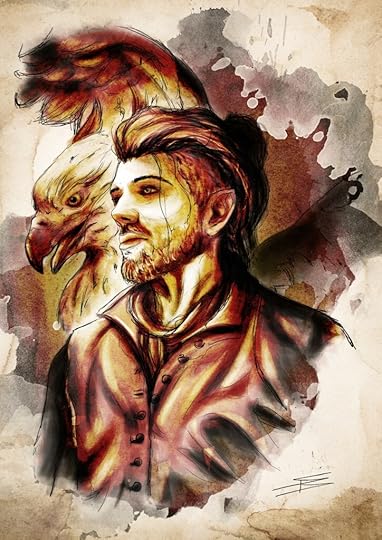 Skjall – Character Art by Sandy Butchers
Skjall – Character Art by Sandy ButchersLet’s spotlight some characters! The novel follows Skjall, the only surviving god, and a group of local, shape-shifting warriors and witches, who are his allies. Introduce us to Skjall, your protagonist, and tell us more about his alliance with the shape-shifters – I know shape-shifting magic users feature in Nordic, Flemish, and Germanic folklore, so did you draw upon any of that for these characters? What other elements influenced their development?
Skjall is old – older than memory itself. He is a god, once revered in forgotten temples, his name carved into stone now ground to dust by the ages. He sees the threads of causality that bind the universe, the inevitabilities hidden within chaos. To him, coincidence is an illusion, a mask worn by truths waiting to be revealed. He carries this burden with quiet acceptance.
The concept of shape-shifters in this story is heavily inspired by old Norse mythology. Shape-shifters aren’t the result of a curse but rather an agreement between two different creatures. It is through that connection that the gods in this story came into being. Gods aren’t all-powerful — far from it.
Much like in Norse mythology, they have as many flaws as they do supernatural abilities. They are vulnerable, they have emotions, and they are far more human than one might expect.
With that understanding, it follows that no man — or god — is an island. We need allies to survive in a world determined to erase any form of divinity.
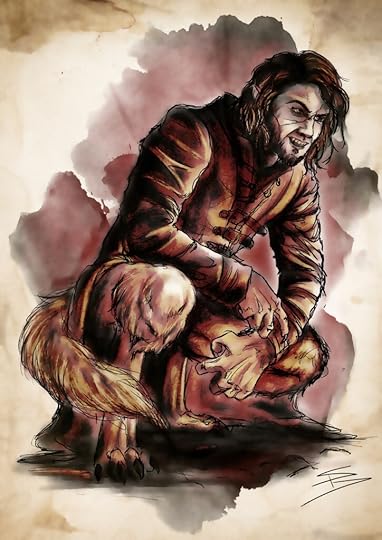 Hjalmar – Shifter Character Art by Sandy Butchers
Hjalmar – Shifter Character Art by Sandy ButchersThe antagonist of the novel is a king harvesting people in pursuit of immortality – and an alchemically enhanced monster-soldier army, which sounds amazing. Tell us more about your antagonist and how you developed this character, and how you came up with the monsters for the book.
Avix is born different – he holds a power the world deems too great to be trusted. Cast out as a child, he learned to live on the edge of humanity’s fear, always trying to prove himself. Now, in his Silver Spire, he waits. The blood of the last god is the key to prove the power of alchemy and live forever.
Whether it will redeem him or condemn the world is a question he no longer cares to ask. Avix emerged from the extinction of the gods — some might say he was the very cause of their downfall.
Driven by a deep-seated grudge against the injustices he suffered, he is consumed by the need to prove his worth without divine intervention. Where others once wielded magic, Avix wields science. Where gods once shaped the world, he has created monsters — proof that no divine power is needed to bind one being to another. And in doing so, he has become addicted to the power he now commands.
We all know that addiction clouds judgment, so it should be no surprise when we find Avix stumbling down a spiral of twisted morals and… interesting decisions.
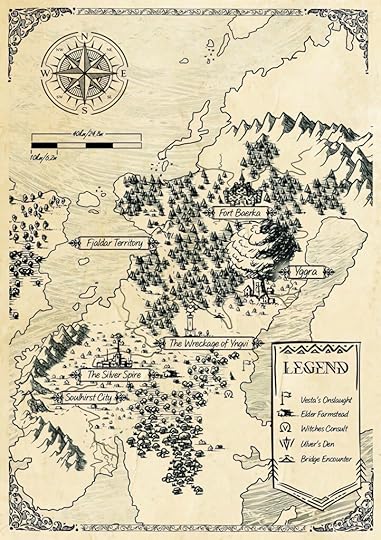 Map for Bonds of Blood and Silver
Map for Bonds of Blood and SilverAs with all great fantasy novels, yours comes with a map! How did you go about mapping the terrain of your world, and what was your process for working out its geographical features? Where in the plotting process did this come in – at the very start, as the drafts progressed, or did things coalesce at the end and influence rewrites?
The map is almost a story in itself. I never truly considered working with one until my agent pointed out how much it could enhance the experience—making the locations, distances, and passage of time more tangible. When you see the map, you’ll notice it covers only a small corner of a much larger world. Who knows? The next book might unveil another part of it. But that’s the beauty of this approach—by narrowing the focus to a single, carefully chosen region, the world doesn’t feel smaller. It feels richer, more immersive, drawing you deeper into the journey unfolding within it.
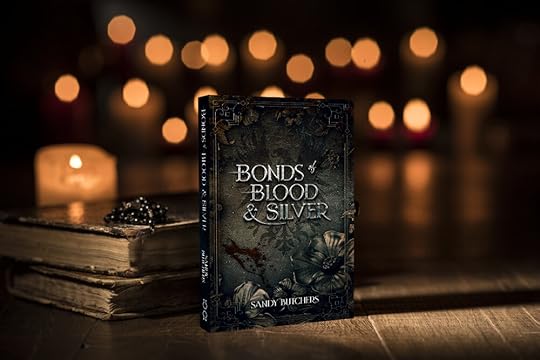 Bonds of Blood and Silver mock-up paperback image
Bonds of Blood and Silver mock-up paperback imageWhat can you tell readers in the Netherlands about the NL-only special release edition?
You know what, the Release Edition is not even exclusively for people in The Netherlands anymore. I’m more than happy to take on orders for people outside of NL.
By the time this interview goes live, everybody should be able to order a release edition through the website. In any case, the Release Edition is pretty awesome.
It contains a signed copy of the book, an art print of the map and a super cool bookmark. What’s there not to love? You can head on over to https://www.sandybutchers.com/bobas to order your copy today!
Do you have any early reader feedback to share with us? What reception has your book had so far?
Despite there not being any full reviews yet (the ARC-team is working hard to fix that though!), early presentations of the book are being received with a lot of enthusiasm. [This is in February 2025: by the time this interview is posted, there will be reviews to share!]
Many local stores here in The Netherlands are setting up events for a book tour, many book bloggers have applied for a chance to spend some time on it, and I’ve received a whole bunch of messages from people telling me they can’t wait to sink their teeth into Bonds of Blood & Silver.
And I’ll tell you a little secret; all that is worth as much as review, haha. But keep an eye on sites like Goodreads or Amazon. Reviews are coming, and I’m as curious to find what people think of the book as you are!
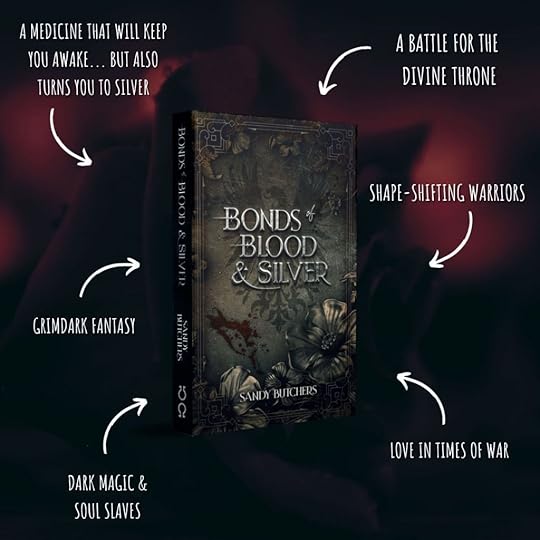 Order Now
Order NowAmazon | Kobo | Barnes & Noble
Like This? Try These:May 15, 2025
Author Spotlight: Lauren H. Salisbury
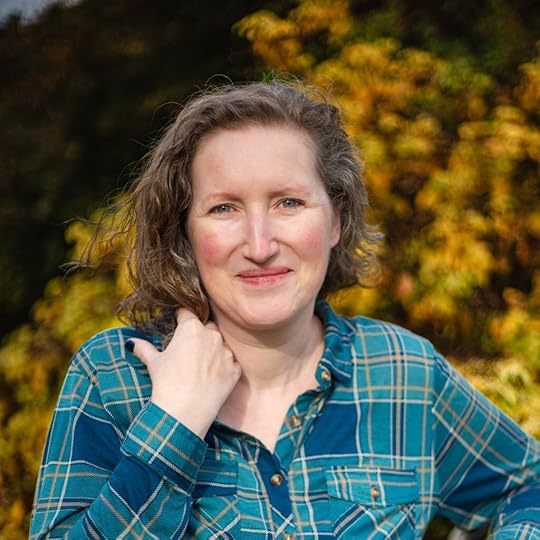
Lauren H Salisbury enjoys all things fantasy and sci-fi, creative, and edible, but not always in that order. An English teacher for sixteen years, she now tutors part-time while trying to figure out how to use an MA in Education as an author.
She lives in Yorkshire with her husband, a rampant Swiss cheese plant, and a room full of books, but she likes to winter abroad, following the sunshine. Her favourite stories include courage and love overcoming all darkness.
Author Links:
Website: laurenhsalisbury.com
Instagram: @laurenhsalisbury
Threads: @laurenhsalisbury
Facebook: @laurenhsalisbury
The Wolf King ebook – Buy Link
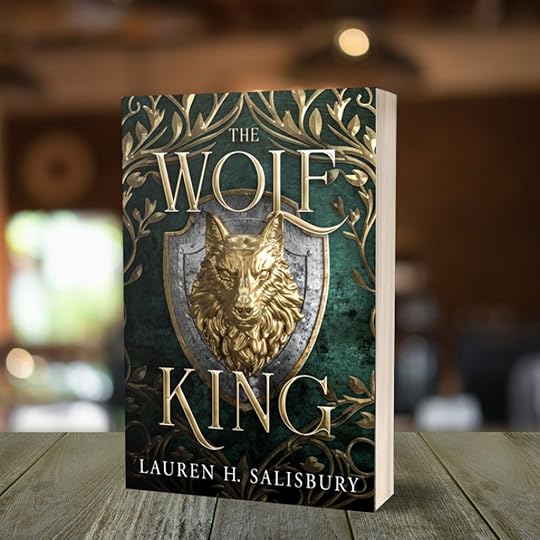
As an author of high fantasy, what are your favourite things about working within this genre?
I love being able to take everyday experiences and situations and transport them into something unique and creative for a different perspective. I also enjoy being able to invent worlds full of wonders without having to research every minute detail to ensure historical or scientific accuracy.
What are the challenges of making each book in your interconnected series standalone, and what techniques do you employ to catch readers up on previous character arc or events?
The main issues I have are in making sure existing readers aren’t subjected to too much repetition, and remembering to re-describe physical attributes for new readers. I usually explore the world’s culture and systems as readers progress through each story to avoid info-dumping, and books in a series tend to move to new areas with new issues and focuses, but the initial set up of the characters is a fine balancing act between filling in the essentials without covering old ground. It helps when time has passed between books so I can introduce the new leads based on their recent experiences and show how the old leads have moved on since their story finished. I think that’s a nice way to link them.
Why choose fables as retellings over fairy tales or folklore?
I like to be different. I’ve always felt like I looked at the world sideways compared to everyone around me, and that’s translated into my writing as well. My quirky take on things makes plot twists and subversion of tropes much more fun to write, and gives me a challenge each time to make it work. I think that comes across to readers too, and I love hearing them say I’ve flipped their expectations or completely taken them by surprise.
Which fables have you tackled so far in The Wolf King and The Dragon Stone, and why? Did the plot form from the fables, or was it more the other way around?
The Wolf King was inspired by The Three Little Pigs, and it absolutely came from the original plot. I asked myself three questions before I wrote it.
First, what if they were people instead of animals, kingdoms instead of homes?
Second, what if the wolf character was after more than just them?
And third, what if they caught him instead of hiding?
I kept as many of the elements as I could, and there are references and Easter eggs to it throughout.
The Dragon Stone is based on The Hare and The Tortoise, and this story started with the characteristics of each. One of my leads rushes in and acts before she thinks things through. The other is cautious and thoughtful, always formulating a plan before he carries it out.
I thought it would be fun to put these two together and see how they worked alongside each other. And I can’t say much else without giving away too many spoilers.
What was the inspiration for The Wolf King, particularly the dynamics of the two MCs?
My nieces inspired me to write The Wolf King. When they were young, they’d only walk long distances without complaining if I told them stories they could act out as we went.
They asked for The Three Little Pigs while we were walking around Quarr Abbey, a monastic pig farm, but they wanted romance and a happy ending for the wolf as well as the pigs.
Everything about my version stemmed from there, including the relationship between the leads. I enjoy enemies to lovers stories, so the push-pull relationship interested me, but I wanted them to be balanced as well, their strengths and weaknesses (eventually) complementary rather than one dominating the other.
What was your favourite trope/s to write for forthcoming The Dragon Stone, and what can readers expect from this next book?
The scene I’m most looking forward to writing is where they have to share one wardrobe.
I’ve already done only one bed, and I was reading a thread a while ago about the logistics of the only one horse trope, so I decided to avoid the debate by sticking them in only one wardrobe to hide instead.
Aside from that, readers can expect lots more fun takes on tropes and quite a few plot twists, one of which made even my jaw drop.
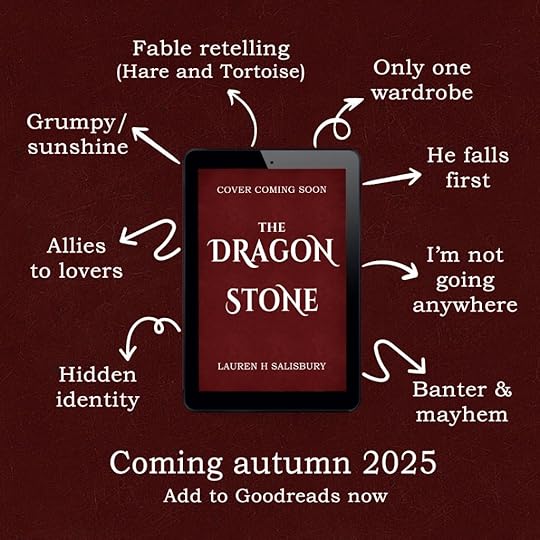 Add to GoodreadsLiked This? Try These!
Add to GoodreadsLiked This? Try These!
May 14, 2025
Audio Release for Yelen & Yelena Chapter 16: The Curse-Damned and Chapter 17: The Mortress’s Games
It’s a 2-for-1 special today, with another 2 chapters released on Eldritch Girl in one episode. The two chapters are both very short, so the total runtime of this episode is still only ~34mins.
In these chapters, Yelena discovers the downside of living in the castle for so long, and the Mortress begins to interfere.
CWs: Nightmares of the rot, possession horror, autonomy, relapse
Listen nowRead alongMusic Credits:
Kevin MacLeod (incompetech.com) Licensed under Creative Commons: By Attribution 4.0 License creativecommons.org/licenses/by/4.0
Intro/Outro:
Quinn’s Dream: The Dance Begins
Soundtrack:
Bittersweet,
Quinn’s Dream: A New Man,
Giant Wyrm,
Morgana Rides,
Magic Forest,
Redletter
Possession in this magic system requires some form of verbal consent, a pledge, a promise, something that can be taken as an invitation. How this is procured doesn’t matter; the vessel must mean it in the moment, but that’s the site of horror, because in Velna’s case it was agree or die.
The other thing is then becoming a conscious passenger in your own body – not fun either.
There’s a lot of gnarly stuff in the last section of the book, but for me, I think the possession stuff pushes it further into Horror-Fantasy, and it spirals down until the ending, when things are resolved more hopefully.
I would like to explore the concept and implications of possession a bit more in other books, and look at different ways it can be achieved and different experiences of it.
‘Soul fusion’ isn’t exactly possession, but that’s another aspect that I’ll be looking at in As Below, So Above.
May 9, 2025
Author Spotlight: Sam Weiss
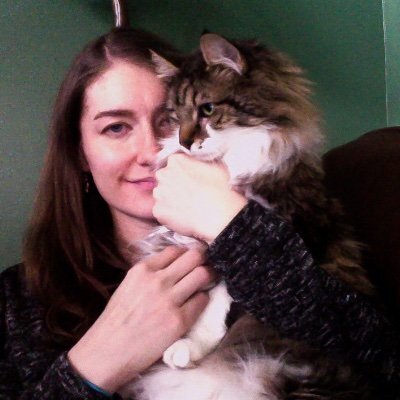
Although Sam is terrible at writing “About Me”s about her, she’s been told she’s great at writing about what fictional people do. The more miserable she can make them, the better. Her love of horror films from the 80s, sci-fi shows from the 90s, and alternative music from the 00s have inspired her to write what she’s calling “Dark Science Fantasy” although she’s kind of making that up as she goes along.
When she’s not ready to pull her hair out after discovering another plot hole she’s created, she goes camping with her husband as far away from society as possible. So far, this tactic has been mostly successful and she’s only had to physically converse with a grand total of nine people this year. Next year, she hopes to get that number down to six.
Author Links:
Author website: authorsamweiss.com
Goodreads: Sam_Weiss
THE AFTERLIFE EXPERIMENT: books2read.com/u/3kjaZL
IN THE HOUSE OF ROOT AND ROT: books2read.com/u/mKqa7v
Insta: @samwisestrange
Tiktok: @samwisestrange
Bluesky: @samwisestrange.bsky.social
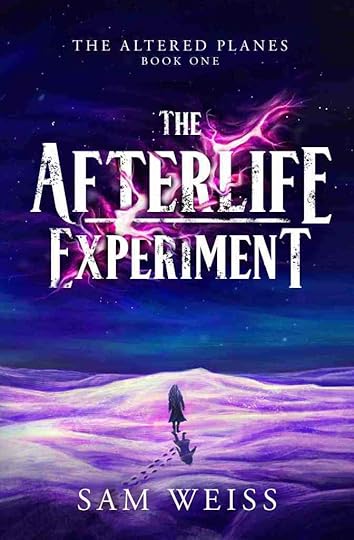
What draws you to the eldritch and unknown, why write about these kinds of fears, and what fascinates you about them?
I’m not really sure, I think it’s kinda like mankind’s fascination with what’s inside a black hole. You’ll never find out, and if you do, you’ll never tell the tale. A lot of my favourite media from when I was younger usually centred around a god-like Big Bad and that sort of level of power is terrifying, yet somehow awe-inspiring.
Tell us about your inspirations for your writing: what elements from these inspirations do you use? (Vibes, themes, settings, aesthetics, philosophy…?)
I’m an all-vibes-no-plot kinda writer. I wish I had answer about drawing inspiration from deep philosophical readings, because that would make me sound smart and cool, but alas, I am that person who hears a song, imagines a scene for it, and then cobbles an entire plot around it.
My favourite media is stuff that’s atmospheric, sort of bleak, and can go completely off-the-wall at times, so that’s been my biggest inspiration.
Things like Donnie Darko, Twin Peaks, Fringe, Dark, The OA, and The Leftovers, where you go, “I’m not entirely sure what I just watched, but I loved it” is the sort of stuff I write.
How does your first book in the Altered Planes series deal with mental health and the ways this impacts your protagonist?
I have the old, “I’m in a psych ward and no one believes me” trope where you’re not entirely sure if what the MC, Atra, is experiencing is real or not, but that’s more of a plot device and less of an actual mental health topic. But the story certainly delves deeper into things like abandonment and the fall out of how that affects you for years, as well as anxiety and depression.
I myself deal with anxiety and depression and these topics are explored more thoroughly in Book 2 without the old “am I real or am I crazy?” trope propping everything up. I went through a really rough patch in my early 20s where I had no clue who I was or what the hell I was doing, and my characters who are also in their early 20s go through a similar situation in that book.
I think it depicts how these illnesses can actually manifest, since media usually just shows it as “you can’t get out of bed and/or you have panic attacks” which isn’t the case a lot of the time. A lot of the time, you’re not even sure why you’re acting the way you are. So that was cathartic to write.
How did you come up with the antagonistic entities that the protagonist faces?
By accident. Usually when I start a story, I have an idea for an overarching Big Bad, but the real antagonist is a human closely associated with it. Most of the time, I have no idea who that is until been outlining for a while. I
’ll have ideas for secondary characters, or side characters that have some sort of relationship to the main cast, and I start thinking of things like, “Okay, what if this person is related to this person? Or this person used to be romantically involved with this person? Or this person knew this person’s relative?” It’s a fun exercise to see how many different directions a story can go, and one of those ideas will stick, and my antagonist will develop from that.
Tell us about your characters – which character did you find easiest to get under the skin of, and which was the hardest to write?
I have a secondary character, Tom, who is a character you’re supposed to love to hate. He’s a huge coward who constantly makes the wrong decisions, and I had so much fun with him. Seeing what would happen if you decided to run instead of own up to your mistakes, making him zig where you’d normally zag, knowing that if he just did the right thing, he wouldn’t make it worse for himself, but yet he always manages to dig himself deeper into a hole. I did something right there because readers either love him or absolutely loathe him.
The hardest character I’ve written so far is the antagonist for Book 2, which I can’t say much about because major spoilers. But when I’m writing characters, I always come up with a backstory about why they are the way they are. It makes it easier to sympathize and get into the head of a villain when you know what their emotional wounds are, but for Book 2, I just wanted to make a really nasty antagonist with no redeeming qualities. They’re evil because they wanna be, so it’s been a challenge to figure out their motivations and what makes them tick. I guess we will find out how that goes when the book is released.
Share some reader responses to The Afterlife Experiment – what has been your favourite so far?
I’ve had some very mixed responses on my book, which I’m not surprised by because it is a bit out there and it’s not going to be for everyone. Someone called my characters, “morally grey at best, absolutely horrid at worst” and I wear that as a badge of honour.
My favourite response has to be:
“It’s like real-life curiosity mixed with a dash of the supernatural and served it up in a story that’s as much about human connection as it is about the great beyond. It’s a mirror reflecting our deepest fears and hopes about what comes after. Five stars don’t do it justice. This one’s staying with me for a long, long time.”
When I read that review, I was like, “YES this person GOT IT!” Even I wasn’t sure what I set out to write until I read that feedback. And honourable mention to an ARC reader who DNF’d but left a 5-star review. I will always remember that.
Like This? Try These!May 7, 2025
Audio Release for Yelen & Yelena Chapter 15: A New Arrival
Velna arrives in the castle and meets the monster of the fireside tales, but is she the same woman Yelena knew? Stick around for my Indie Author Spotlights and shout-outs at the end, and head to cmrosens.com/author-spotlight-series to check them all out!
CWs: Loss of agency and autonomy, depression themes – these increase from this chapter onwards.
Listen NowRead AlongMusic Credits:
Kevin MacLeod (incompetech.com) Licensed under Creative Commons: By Attribution 4.0 License creativecommons.org/licenses/by/4.0
Intro/Outro: Quinn’s Song: The Dance Begins
Soundtrack: Morgana Rides
Velna ArrivesBeing a vessel is not outright possession, it takes a while, and I’m going to play with this vessel idea in later Gothick Fantasia stories, and also introduce a similar concept into the Pagham-on-Sea stories when I get around to writing the Egg and Gwen Mysteries (a spin-off historical fiction series set from WWI through to WWII, and possibly into the early 1950s, before Fairwood House is cursed in 1958).
This is the chapter where you start to see Velna’s possession a little bit, not just in her, but in the way Yelen reacts to her, and little hints in the way she reacts to her surroundings. He’s not very friendly, and his instinct is to retreat into a game with Yelena, while being openly hostile to Velna because he thinks initially she didn’t help when Yelena was ejected from the village.
Some of this is reflecting the way he reacted to Yelena at the start as well, and the fact he’s currently irritable and depressed, and not responding well to his home being invaded again by the outside world.
The cruel Yelen will come out more, the longer Velna-as-vessel stays in close proximity to him, and he has to wrestle with that.
I think the more you see of Yelen’s latent cruelty, the clearer it becomes that if he does transform back into a man at any point, that would mean he’s basically lost the battle to be better.
Enjoy Chapter 15: A New Arrival, in the meantime! If you want to get early access to the next chapters, join one of my Ko-Fi memberships.
May 5, 2025
Author Jamison Shea on Monsters, Monster Lovers, and Monstrous Media

Jamison Shea (they/them) is a dark fantasy and horror author, flautist, and linguist hailing from Buffalo, NY and now dwelling in the dark forests of Finland. When they’re not writing, they’re drinking milk tea or searching for eldritch horrors in uncanny places. I Feed Her to the Beast and the Beast is Me is their debut novel.
Jamison is represented by Jennifer March Soloway at Andrea Brown Literary Agency.
Listen NowAuthor Links:Website: jamisonshea.com
X/Twitter: @wickedjamison
Instagram: @wickedjamison
Threads: @wickedjamison
Bluesky: @wickedjamison.bsky.social
Tumblr: wickedjamison.tumblr.com
CMR: Hello, and welcome back to Eldritch Girl. And we’ve got Jamison Shea with us today, which is super exciting. Would you like to introduce yourself for us, Jamison?
JS: Yeah, will do. So I’m Jamison Shea. I am a currently YA dark fantasy and horror author, but I am soon going to be expanding into adult. I am in Finland, but I’m originally from the United States, Buffalo, New York, to be specific.
CMR: Oh, it’s lovely to have you. And it’s really nice to see you again because we did a charity game together before, which was really cool. I can’t remember who that was with.
Together: Sword and–
JS: Key. Sword and Key. And it was the Call of Cthulhu thing. Yes.
It was Novel Adventures Presents Pulp Cthulhu, GM’d by Anniek, with players CM Rosens, Jamison Shea, and Derek, featuring Morgan Dante.
This game originally aired on twitch.tv/sword_and_key [Sword and Key’s Twitch Channel] on October 28, 2023, and raised money for Project Hope.
Part 1: youtube.com/watch?v=4i6J6–_UJI
Part 2: youtube.com/watch?v=y-w31qGYpLk&t=7s
CMR: Yes. So check out Sword and Key because they do some charity games and they do some RPGs and they’re just like a really cool bunch. So, yes. Jamison, you’ve just got your duology complete. I absolutely loved I Feed Her to the Beast and the Beast is Me. And I’ve just got my copy of I Am the Dark that Answers When you Call. And I’m really excited to get into that. So would
you like to introduce us to your latest novel?
JS: Um yeah, so, I Feed Her to the Beast and the Beast is Me has a sequel that I tried to match [with] an equally long title, so this one is I Am the Dark that Answers When you Call. And then I suppose I can read the blurb for the first one? Yeah, I’ll read the blurb for the first one, so that it doesn’t spoil the second one, since there’s spoilers in the blurb.
I Feed Her To The Beast & The Beast Is Me, by Jamison Shea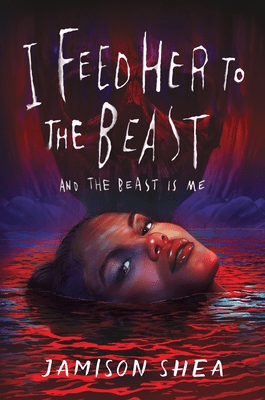 Get it Now
Get it NowInterview
Soon I’d be a name no one would forget, a raging fire they couldn’t escape.
In the cutthroat world of ballet, Laure will always be an outsider, no matter how brilliant she is. Tired of being overlooked, she ventures deep into the catacombs of Paris, where she finds a pulsing river of blood that offers to change her fortunes forever.
But once she enters into the deadly pact, how can she distinguish her desire from the primordial presence running through her veins? Soon Laure is faced with the ultimate choice: break herself for a world that will never love her back, or succumb to the darkness that wants her as she is, monstrous heart and all.
There will be blood.
CMR: I love it I really enjoyed that one I’m so excited there’s a sequel, because you advertise this as a villain origin story, so if that doesn’t sell it to–
JS: Yes!
CMR:–I don’t know what will.
JS: Yes. For the sequel, I’ve also been pitching it as like. Black Swan meets Venom. So if anyone’s a fan of the Marvel, like the Venom movies, it does have a little bit of that comedy, a little bit where, you know, there’s a creature just sharing your body. And sometimes you argue about what you want because the creature possessing you doesn’t necessarily want what you want. They don’t have the same opinions, but you are trapped in the same meat suit. So, yes.
CMR: Amazing. And I really want to talk about monsters, particularly.
JS: My favorite topic.
CMR: I know! What is the appeal for you in monsters and writing and exploring “monstrous”, (in inverted commas), characters?
JS: That’s a good point. I think. Well, monsters have historically always been outsiders. Like in a lot of fiction, for as long as fiction has existed, monsters have always been outcasts. They have been the Other. And because they are the Other, there is, I think, there’s a lot of freedom in exploring the different parts of humanity and what it means to be human without a lot of expectations.
And so when you have a hero who is, I don’t know, a middle class white cis man, who… with blonde hair, blue eyes — there are expectations about how he
should behave what he can do what he can’t do, etc., whereas if you have an eldritch monster, like, that’s fair game. They can do whatever you want, and so you have a lot more leeway to explore, especially when it comes to questionable moral and ethical decisions, and even like some of the more perverse darker aspects of human behavior simply because it’s “not like us” (in quotes) and so yeah, you have more freedom and less judgment, I guess is another way to say it, yeah.
CMR: So what does “monster” mean to you as a concept, and how do you use that concept in your writing?
JS: I don’t know I don’t know because like when I think about my favorite monsters they are not human, so for example I think about Hellboy, or … I do not remember his name, but the fish guy from The Shape of Water by Guillermo del Toro… or like um…
CMR: Yeah he’s credited as “Amphibian Man”.
JS: Amphibian Man, there we go that’s why I can’t remember the name!
CMR: Ah yes of course…
JS: But yes, when I think about my favorite monsters, they aren’t human, or they are … they have human aspects that we can empathize with and like see ourselves in, but they are also different enough that we can have a little bit of freedom. So yes, Hellboy, Amphibian Man, Lestat de Lioncourt from An Interview with a Vampire, yeah, those I think are really like peak monster to me.
CMR: I think that’s what I really like about I Feed Her to the Beast, because Laure is a human person starting off.
JS: Yes.
CMR: But you’ve got all of this really cool layered darkness to her and the ambition that she has, and how that can drive you to do some slightly
questionable things.
JS: Slightly.
CMR: Slightly. And also, I love that you have the monster boy kissing.
JS: Yes. A requirement. Yes.
CMR: Yes. With Poison Monster Boy.
JS: Andor!
CMR: And I really love that about him. But also you’ve got this sentient blood river that is a prominent character and doesn’t have any kind of, you know, it’s so it’s almost like a very abstract thing. And I love that concept. How did you develop that concept or come up with that concept?
JS: I wanted it to be kind of a shapeless god that is unknowable. You can’t really, you can guess at its motivations, why it does things, why it wants what it wants, but it isn’t. It’s completely different. It’s completely Other. And so, yeah, I wanted it to be kind of a wildcard to throw in Laure’s path. Because she is very clear about what she wants and how she wants to get it. And so having the embodiment of chaos riding around in her skin suit, I thought added an element of not control that a ballerina would not cope well with.
Because she is very… neurotic, and she’s very, ‘everything has to be perfect’ like, not a hair out of place, I tie my ribbons the same way every single time, she’s very regimented. And so I really wanted like absolute chaos to be the thing that drives her into another path.
CMR: Yeah, and it’s got a lot of, I think, the first one definitely has a lot of overtones of Suspiria as well in it for me. I was like… I spotted those, I was like oh!
JS: Yes, I am definitely a fan of Suspiria.
CMR: That’s such a good film. Yeah, and I thought that was, yes, like Black Swan, Suspiria, and then you’ve got the added Venom chaos going on in the second one, which — I absolutely love Venom, he is my favourite alien creature thing.
JS: Yeah, I just had so much fun. I didn’t know about it before I started writing I Am the Dark so I wrote the draft of I Am the Dark and my editor, I think she had just watched Venom and so as she was reading through my manuscript, she kept leaving jokes about Venom in there, and I didn’t understand, and so I had to go watch it to understand some of her comments.
CMR: So good right?
JS: Oh yeah, I get it, I get it. I see why.
CMR: And so, yeah, how do you develop your concepts and your characters? What’s your process for that?
JS: I don’t know. I think mostly I have a character or like I think of an emotion. I think there’s like an emotional undercurrent that is like the basis. Someone trying to do something from an emotional aspect. And so for I Feed Her to the Beast, it was I wanted someone who tries to be loved and goes through the most unhinged lengths to get love and they don’t understand what love is.
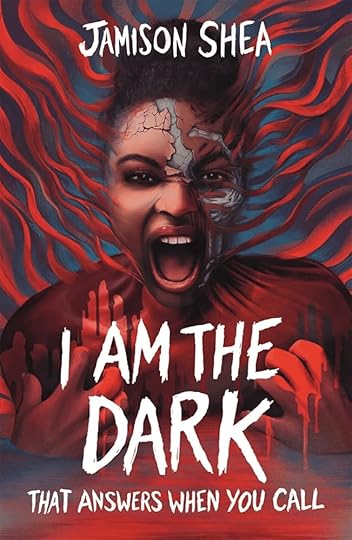 Get it now
Get it nowAnd then with I Am The Dark, it was very, that was burnout. So how do you recover from burnout was the question. And then the book was the answer. And I think from there, I really just tried to have as much of it be realistic as possible so that the fantastical horror elements can really shine, and so most of it is based in reality.
Laure at the ballet trying to do ballet and a lot of the conversations that she has the experiences that she has the feelings that she has are all very normal so that the eldritch parts feel extra intense.
And then from there, I just kind of brainstorm what would be cool, and how can I fit that into the narrative? Yes.
CMR: So very character -driven process then?
JS: Yes.
CMR: So do you do characters first, and then you build the world around them?
JS: Yes, um, characters first, and then I start building the world and then I often change the world details until it can really fit the character’s journey, what they need from start to end, yeah.
CMR: Oh cool yeah.
JS: And I suppose, because in the duology obviously it’s very much kind of the real world I suppose, like an alternative world in which eldritch gods exist under Paris, but like but for sure it’s very much rooted in actual places, so for example with I Feed Her to the Beast, originally I had a fantasy city, just like a made-up city where this was taking place, and that didn’t feel real enough, and so then I set it in San Francisco.
But I didn’t really like it in San Francisco. It wasn’t, it didn’t fit completely, especially because everything is so old. And like, I wanted things to be old. And San Francisco is not a very old city. And so when I was thinking about other locations, I had been to Paris a lot, and there’s the catacombs, which naturally just like, that is a perfect setting. The catacombs are old. Who knows what’s all down there? It could be totally plausible that there’s an Eldritch God. The ballet is very old and it has a different reputation in Paris than it does in San Francisco.
And so Laure would have a bigger meltdown in Paris than she would in San Francisco. And so, yeah.
CMR: Yeah, that makes a lot of sense. I think you do maybe have issues in America of going like, ancient American history has got a very different connotation. It’s got a very different cultural background to Europe, which is maybe much easier to kind of, you know, get a handle on.
JS: Yeah,
CMR: …to use in that way. Yeah, 100%. And the Paris catacombs are just magical, but also. bonkers.
JS: Absolutely bonkers! There was a news article within the past like three months I think, where um a wall had collapsed a little bit, which exposed more bones and like more unexplored areas, and so now they have to bring in a bunch of like archaeologists and forensic people to explore this new corridor of the catacombs with literally like three months ago.
CMR: I love how bananas it is down there it’s just like what is happening it’s like a whole city underneath the city yeah I think that’s, yeah, it’s really cool, and obviously you’ve then got direct links to Suspiria as well because that is not in Paris though I can’t she’s in Germany I don’t remember, was it Berlin?
JS: I think it was Berlin. Yes, it’s Berlin.
CMR: And I think like, so you’ve got those links to Suspiria in that it’s an American in Europe, but also it’s not quite, you know, you can draw those parallels, but it’s not quite the same. And you’ve got like…
JS: Yes, yeah.
CMR: And you can do it without the politics of East/West Berlin. Yeah, I really like the world that you’ve created. I was wondering when you were saying that you were tweaking the world to make sure that everything kind of fitted the way that you wanted it to fit, how did– like, was that as you were learning more about the characters and decided … Did you decide on the themes or did the themes just kind of come to you, and then you were like okay if I’m going to do this then I have to change this? Like what was…?
JS: Yeah, it was. I had character and themes and then as I was writing I had to make adjustments along the way. And so, for example, the River of Blood came later. So I decided on Paris because there’s catacombs. And I’m like, oh, you can find something eldritch in the catacombs, of course. And then, I was thinking about how there is Paris up top. And then there’s, as you said, like another city, another world down below. And I was thinking, well, in Paris, there’s the Seine that moves through it. And so wouldn’t it be great to have a mirror river in the catacombs?
And so that is how Acheron became a river and not just like, floating mist, or I don’t remember what the original idea was. So Acheron became a river because it was set in Paris, and I wanted a mirrored river.
And then I also liked, as I was describing the setting, Laure going from home to the ballet or from the ballet to dinner with her friend’s parents or whatever, she kind of has these interjections about the history of Paris and events that happened in Paris. And so, for example, there is a square where they set up the guillotine, where Marie Antoinette, for example, was beheaded, and Laure looks for blood in the pavement because it’s just a blank square now. And so I was thinking like, oh it would be great if like, there’s…. she can’t really find traces of blood up top, but you can find it below? And so then: river of blood!
CMR: Yes I really like that that kind of mirror to the city’s history as well as being something really otherworldly, and I really liked — I don’t think it’s a spoiler, but there’s a parallel river, which is the White River, which also requires its own sacrifices. We’ll leave that there for a minute. But how did you come up with the red and the white? How did you come up with that contrasting?
JS: So part of the story and the theme, I guess, is I wanted to invert light and dark.
And so, for example, a lot of the horror elements take place in the ballet itself. And if you have ever been to Opera Garnier, it’s very bright. There’s a lot of light coming from every direction. There’s chandeliers everywhere. It’s very light.
And so I wanted to have this kind of villainy, antagonistic force, that is pure light, and see what that would be like. So it was just an exploration at first. And then I decided I really liked it. I kept it that way.
CMR: I think it works really well. I really like that part. And there’s just so much you can do with that. And yeah, I’m really excited for the second book.
JS: It becomes more prominent in book two.
CMR: So what about The Monster Boy? I feel like he gets overshadowed by the River of Blood and all the cool stuff. And I really loved that he’s part of Laure’s arc and giving her something to hang her humanity on, almost, and give her that reason to live beyond the ballet and beyond her ambition. So was he always part of that arc, or was he a character that you introduced later?
JS: No, he was always a part of it. And so I don’t know. I wanted, so obviously she needed a voice of reason. There had to be some voice of reason in this book because she’s going unhinged. I knew she was going to go off the rails. And so we needed some voice, some piece of humanity that would just be like, you don’t have to do this.
And I thought it would be, um, interesting to have the most monstrous looking person, or the most monstrous looking character in the book be the most human and the most gentle, um the biggest outcast, that if Andor were to walk in the streets in his monster form, people would lose their minds, but he is the gentlest and the kindest and the most accepting and the most human of the bunch.
I thought it would be a good contrast especially because Laure is such a perfect little ballerina, she’s always wearing her bun, and she always likes to wear pink for example, and she’s vicious. So the contrast between of this vicious girl in pink and then like, a calm monster…. Yeah I liked the imagery of it.
CMR: I loved it I really like their little relationship yeah and I really like the idea of him being poisonous. And having the idea that he’s sacrificed to the river multiple times to get where he is. And every time you give something to the river, obviously something happens to you as well. And he’s just done it over and over and over. Kind of like, it was almost like an addiction, kind of. And like, I was like, oh God, poor lad.
JS: The river will fulfill your needs, whatever they are, at a cost.
CMR: That was a nice bit of foreshadowing, I guess, for Laure’s arc, and like you he was also very much a warning of like if you do this over and over this is what happens to you, but something – something relevant to you will happen to you, not exactly like what’s happened to me, yeah, but this is what could happen to you.
JS: And she just looks at that and goes well firstly that sounds great, also I want to kiss you, so that’s not a good warning.
CMR: Yeah, yeah this sounds … this sounds fine. What gave you the idea for his monstrosity, like um, the way that that manifested, and the garden?
JS: Just vibes. I don’t know. I was really interested in poisonous plants, but specifically pretty flowers that are toxic. And so I don’t remember why. I just started reading about poisonous flowers. And so I was like, oh, it’ll be really, really cool if I have a character who can grow stuff, but it’s all just like toxic.
And then I also thought it would be for Andor’s personality to have a hobby that’s like also kind of suited to his personality. So if he’s very gentle and calm and like, oh, of course, he’s going to be like a gardener or something. Like, plant guy. And so having that dark little twist of just poisonous flowers everywhere.
And if he is also pretty, what if he’s also poisonous?
That was it.
CMR: I loved it I was thinking about a lot of the Gothic stories um where you have plant daughters and like yeah, like weird botany, and all that it was just giving me all of that, yes, so I was just wondering if you’d read those stories or if it came out of that?
JS: Yeah, I don’t know, like, I know what you’re talking about, and off the top of my head I can’t recall anything, but I’m pretty sure that it was floating in the back of my head as I’m thinking… as I’m reading about larkspur and um other kinds of poisonous flowers, that probably just kind of all synthesized together, yeah, yeah.
CMR: Yeah, I think A Botanical Daughter by Noah Medlock that came out last year that was um If you haven’t read that, that’s…
JS: I’m looking it up right now.
CMR: Oh, I would. It’s basically two gay Victorian men create a plant daughter and the maid falls in love with her. And they make her out of the substrate is a dead girl that they uncover.
JS: I’m ready.
CMR: Yeah, I think you’d really enjoy it.
JS: That’s a rec. Ticks all the boxes. I’m ready.
CMR: Sorry. Back. back to the books. So you talked about how the second book the question that you started with was how do you recover from burnout.
JS: Yes.
CMR: So how did the the plotting and the drafting process go for you when you were like, that’s your essential question, and then you were like okay how am I going to create this into an actual sequel?
JS: Yeah, so originally I Feed Her to the Beast was supposed to be a standalone. It was going to end where it ends. And then I was not going to write anymore. Like I was gonna, sorry, bye.
But I realized at the end that there was an open question of what happens next, because of the ending and spoiler for anyone who doesn’t want to know. Um, so Laure leaves ballet is how it ends. She quits. Sometimes quitting is good, but then what do you do afterwards?
And so that question really, it felt like it needed its own space to explore. And so I wanted to have Laure, as she’s trying to figure out how to recover from burnout and she’s not who she used to be.
And so there’s like, I think, for a lot of people when they’re burning out, they have this identity crisis of like, I don’t struggle with this task. I am perfect. And now you are struggling. So what now? And so I wanted to have her play with that identity and trying to build a new identity and see who she is outside of the ballet. But she is a dancer and dancing is such an important part of who she is. And also she’s possessed. And so how much of her is really left when she’s possessed?
So, yeah, I had a lot of hijinks that I could just kind of craft together and really see what happens when you have this Eldritch entity that is possessing you and you’re having an identity crisis at the same time. What will it do? What choices will the Eldritch entity make when its vessel is having an identity crisis?
CMR: Yeah. And did you have the arcs for the side characters planned out as well during this? Or were they just very reactive around the central… premise as you were drafting?
JS: I had to, I did put in some effort to build out their arcs. The main question was definitely about Laure, identity, burnout. But then when I was like, this is going to be a sequel, I had to take a little bit of a break to see what would happen next.
So for example, for Andor, he is dealing with grief because of events in the book. And Keturah, who is also one of the most sane people in book one, seen the madness that unfolded and like any sane person she wants out having seen what happens to people she cares for she wants no more to do with the eldritch god and so from there I had to see like where would their arcs go and how would this intersect with again Laure’s identity crisis?
Would she loop them into her shenanigans again, or would they manage to escape unscathed but of course as relationships deepen among them no they do not get out unscathed.
CMR: I think that’s really interesting as well from the perspective of proximity to monstrosity and the questions around that and like what happens when people can’t maybe cope with the implications,
JS: Yeah.
CMR: –of the different, or the Other, or something that is different in a way that is not compatible with them, yeah, but also that kind of the way that that can be almost attractive or compelling or you can’t quite extricate yourself from it, because that’s also what the monstrous kind of is; a monster is a warning to a society or to an individual, or to it’s that that thing on its own that stands alone, and you can put so much into it but also anything that gets drawn to it and gets into the orbit of that monster there are consequences and you can read those consequences in different ways.
JS: Yeah. And also I have a little bit of what does it mean to love a monster and be in solidarity with a monster when the monster may have to do monstrous things, I don’t know. Yeah. How does that work.
CMR: And I think it’s a very safe space in fiction to explore that because if you were writing any other kind of genre or realist fiction where the monster was a human monster, suddenly that becomes a very different moral question almost.
JS: But like Laure was just a regular ballerina serial killer, if she was just going around maiming everyone, I mean that’s halfway to actual black swan but it would be very different how we talk about her, how society treats her, the friends that she would make. Does she just befriend other serial killers at that point, like what and then what happens when you try to defend her or you yeah you try to protect the serial killer? It’s a different story.
CMR: Yeah it’s very different. It’s not a great film but I was thinking about um, Poor Agnes which is a Canadian film. It’s from the point of view of a serial killer who is called Agnes and she does some horrendous things and justifies them all. And she keeps a guy in her basement. Yeah. It’s, yeah, it’s fairly, it’s fairly brutal. That’s not a rec, but it’s like a, yeah, that’s, that’s kind of what it would be like.
JS: Or for example, even like Hannibal, which is one of my favorite media of all time. And like, there’s so much time invested in trying to capture him, and like you know he’s a bad guy, but he’s kind of funny, and so you you let it slide, um, you know, he’s a good cook, and so you also let it slide… um but at the same time you are like you can’t help but be a little disgusted, um and so yeah.
CMR: Oh god that spawned so many TikToks didn’t it?
JS: I have some saved. I have some bookmarked.
CMR: I bet. I can’t help … I read Hannibal the book when I was about 14, 15, um which was maybe maybe too young but who can say who could tell. And that made a massive impression on me because of the ending of the book, which is completely different to the ending of the film, where the film gave it a very kind of moral ending where Clarice does not succumb to Hannibal and tries to arrest him like a good little FBI agent. And I definitely remember being like, why?
JS: Yes.
CMR: Yes. What are you thinking? What is happening here? Because like, obviously in the book, that 100% doesn’t happen. And there’s like this whole erotic dinner bit. And I don’t think it’s a spoiler because Hannibal fans would. Yeah. But like, yeah. If you [any of our listeners/readers!] haven’t read the book, please read the book. It’s much better than the film.
JS: It’s been a while. Um it’s been a while and I’ve been meaning to go back and reread um all of it um but yeah like, I just… I didn’t understand, um, and I think when I was writing this duology part of it was all of the questions of movies and then series that I start to like and then hate the ending, and like, you know, the character…. like there’s always a character who chooses to be good at the end and like that’s…. why, why?
And so, yes, part of the inception of this is like a character who chooses the bad option. Yes.
CMR: Yeah, yeah. And it’s either that or I find you’ve got this really compelling villainous character that could go stick the distance through the whole series. Or they’ve got like really good dynamics going on with another villainous character. And you’re like, oh, chemistry, what’s happening here? And they kill them off mid -season, inexplicably. And you think, what? Yeah. I don’t understand. Why did you choose to do this? And I just, yeah.
JS: Yeah. I also, I like when there’s a character who is evil or they were good and then they turn evil and then they decide to be good again. And I’m like, why? You could have just stayed evil. You were more interesting when you were evil.
CMR: Yeah, the flip side of that is if you do have a redemption arc that you want to have in that’s supposed to be a redemption arc, but the character is not allowed to have it. So like the character starts to redeem themselves through the season or whatever it is and then the writers decide oh it was more fun when they were evil and so for no reason at all they go back to being evil without any kind of logical proper follow-through.
JS: Yeah.
CMR: And all of a sudden it’s the very next episode and like oh we’re back to like, I don’t know, killing random women, or eating a baby, I don’t know, like whatever it is and you’re just like, why though? Because why did we just do a U-turn here when we were we were building on something and then there’s no reason for that to have happened. yeah like there’s there’s ways of writing monsters right ways of doing it properly, yeah, you’ve got to let them have … And that’s the thing, like monsters aren’t just archetypes. If you’re writing them into stories and you want to use like a monstrous figure, you also have to give them layers and you also have to give them an arc. And like, if they’re a character, right? Like it’s a bit different. You have to treat them like a character and not just a plot device.
JS: Yes, yes, for sure. Yeah. But like, oh God. So many, I have so many gripes about that. Yes, it is. Yeah, I think that is one of the reasons I was so happy with the adaptation of Interview with the Vampire, like the show, because it adds a lot more complexity to the characters.
And like, I think Lestat and this version compared to like the movie or even the book is just, it’s more colorful. He’s more colorful. Because I feel like Tom Cruise’s Lestat was just evil for evil’s sake, for plot reasons, so that Louis could brood and have something to brood over.
The show, at least the TV series, has more… We see more insight into why Lestat does the evil things that he does, and he’s still evil, but now, like, okay, that made sense. I would have done the same thing if I was Lestat, you know? He’s more of a character. He’s more well-rounded compared to, for example, the movie. And of course, in the book, Louis is not concerned with painting Lestat like a person or a character anyway.
So I definitely prefer the show for that roundness.
CMR: I need to watch it. I’m behind. I know.
JS: The hype is deserved.
CMR: Okay. I get scared with hype, but.
JS: Yeah this did not… I was, I was afraid of the hype as well and it definitely delivers so.
CMR: Cool. let’s get back to you okay? Back to you.
JS: Right, right.
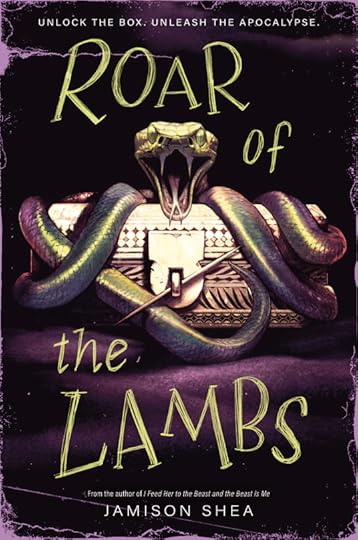 Preorder
PreorderCMR: Great. What does the future look like for your work?
JS: So my duology is now done, and in August I have another book coming out! This will be a standalone, completely different world building, mythology, everything.
It’s called Roar of the Lambs, it is a YA Gothic Romance.
There are horror elements, there are Gothic Horror elements, but I would say that the horror elements are not as strong in Roar of the Lambs compared to I Feed Her to the Beast duology. And it is, I would say, my most personal work yet. It is set in my hometown, Buffalo, New York.
And it is about a psychic, a teenage psychic, who lies all the time, which I thought was a funny dynamic. So she never tells the truth. And one day she discovers a strange heirloom that predicts her death. And so now she actually has to start speaking up and telling the truth.
And the only person who believes her is a non-binary juvenile delinquent that nobody’s going to listen to anyway. So the two of them team up to stop her from dying and it leads into an apocalyptic adventure across multiple familial generations. Oh, wow. I can’t wait for that. So that is Roar of the Lambs.
CMR: Did you say when is that? Do we have a date for that?
JS: I believe August 26th is the published date, and that is for the US. I don’t think there is a UK release date yet.
CMR: Okay. I’ll do the American pre-order and wait for it to get here again.
JS: There might be. It’s in progress, but there is no release date yet for the UK.
CMR: Just doing grabby hands at the screen.
JS: I definitely had more fun with this um the lead characters are they have a little bit more levity than compared to Laure who’s very like strict by the book no fun ever, um so yeah this is very fun to me, I had fun writing it.
I was told that the gore was intense, but I had fun. That’s fine. You can have gore in YA. There’s room for everything. It’s what people expect of me at this point. And it’s what people expect, I think, from Gothic horror. Yeah. And like, yeah. So that’s a bit more.
CMR: Would you say it’s like American Gothic or are you drawing on a lot of other Gothic traditions for that one?
JS: Yeah, it’s American Gothic. It is very rooted in local history. and yeah it’s rooted in local American history and kind of the gothic parts of American history, I would say in terms of like, tone, it is very similar to Crimson Peak the movie.
CMR: Yes okay.
JS: That.
CMR: I’m sold already, that’s on my list, yes.
JS: I’m very excited for — again to be able to promote it and talk about it and all of the things but all of the research that I had to do for it and yeah.
CMR: So um I think that’s about all we have time for thank you so much before you go
JS: Oh it’s been a pleasure.
CMR: Before you go, would you like to just let us know where we can find you, social media, website, newsletter, things we can sign up for to keep in touch?
JS: Yeah, so I am on all social media sites, @WickedJamison, and Jamison is spelled with an I, not an E. So @WickedJamison, or if you search Jamison Shea, you will be able to find links for everything.
I mostly use Instagram, but I do post updates to Twitter, Blue Sky, TikTok, all the others.
CMR: I will post all of your links as well in the transcript so people can listen to this. And f you’re listening, you can go to the transcript on cmrosens .com. Just search for Jamison Shea on my blog and you’ll be able to find the transcript with the full links and buy links and everything else. So thank you so much for coming on the show. It’s been great.
JS: Thank you. Thanks for having me. This was fun.
CMR: It was fun for me too. Thank you, Jamison, so much. And we have a couple more bonus episodes coming up for you. But in the meantime, enjoy the rest of Yelen and Yelena. See you soon for more Eldritch Girl. Bye now.
May 2, 2025
Katy Porter Art & Pagham-on-Sea Book 4 (1.0) Blurb!
Presenting Katy Porter artwork by Delilah Monroe, @delilah_monroe__ on Insta & Threads, and @delilah21.bsky.social on Bluesky.
She is a digital artist open for commissions currently, specialising in Pixel Art & Live2D, and does not take NSFW requests.
Katy Porter and the Throne by Delilah Monroe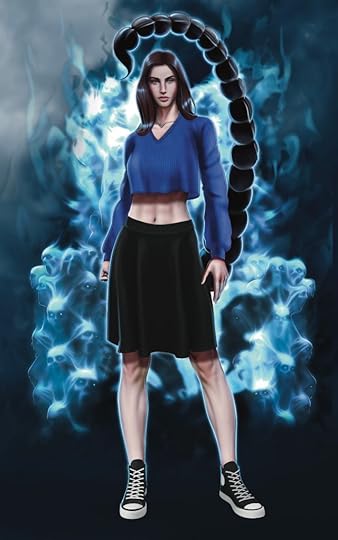 Katy Porter by Delilah Monroe.
Katy Porter by Delilah Monroe.Commission Delilah on Instagram: https://www.instagram.com/delilah_monroe__/
This is an older version of Katy; I wanted her aged up to her early 20s, to see how she would look during the events of Book 4, which I want to write as a standalone entry point to the series. This is a pretty big challenge. It also has significantly more mathematics and physics jokes than I originally intended, including incredibly niche maths internet culture jokes, so look out for those…
Book 4: Plot Summary 1.0Katy is in her last year of University and hasn’t quite managed to keep her monster side under wraps; she thinks she has met someone, but it turns out he is a monster hunter, so she eats him.
Devastated by his betrayal and her own reaction, Katy decides that a ‘regular’ life after she graduates isn’t for her, and decides to take her place as her family’s God and Guardian. If only there was someone out there who wanted to romance an eldritch god girl…
…Little does she know that, in another dimension, in a galaxy far, far away, Something has broken out of containment as Its dead planet orbits a dying star, and is on Its way to find her. There is just one snag; It is a parasitoid, which kills its hosts instantly and puppets their corpses. Not only does Katy find herself being stalked by a weird number of the freshly undead, but the Parasite God wants to merge with her, and together they will become the fabled Devourer of Worlds.
Katy is faced with a difficult choice: apply for funding to get her Masters in Archaeology, and stick with her family role as Death God and Guardian of the Portals, or quit Uni to become a trad wife to an ancient Eldritch God, mindlessly devouring galaxies and dominating the universe.
It’s a lot to decide, especially as her third year dissertation is due in a few weeks and finals are just around the corner…
That’s where I’m at with the plot of Book 4 right now, which has cycled through various titles, like Devourer of Worlds, Thirteenth Enthroned, and Feed (its current working title).
I’ll be commissioning more art for the aged-up characters, so expect to see Wes and Ricky coming soon, both in their 30s.
For now, you can compare this slightly older Katy with previous art of Katy, and see how other artists have imagined her, and how she’s grown.
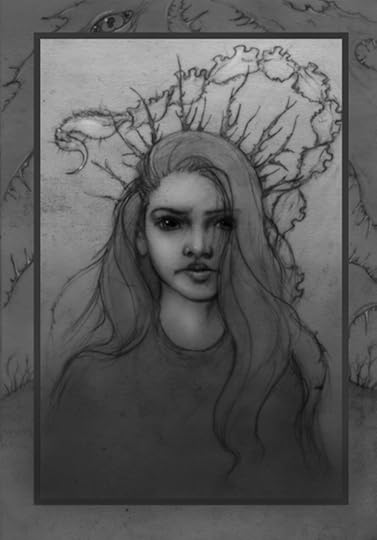 Katy Porter by Thomas S. Brown: interior illustration in The Day We Ate Grandad.
Katy Porter by Thomas S. Brown: interior illustration in The Day We Ate Grandad. Commission Tom: https://mothfestival.wordpress.com/commissioning-tom/
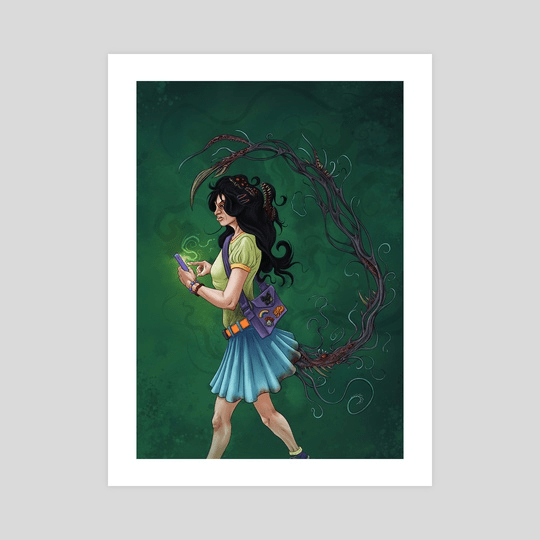 Katy Porter by Daniel Beswick. Fan art drawn on his Twitch stream.
Katy Porter by Daniel Beswick. Fan art drawn on his Twitch stream.Print available to buy from him: https://www.inprnt.com/gallery/visceralrevolt/katy-porter/
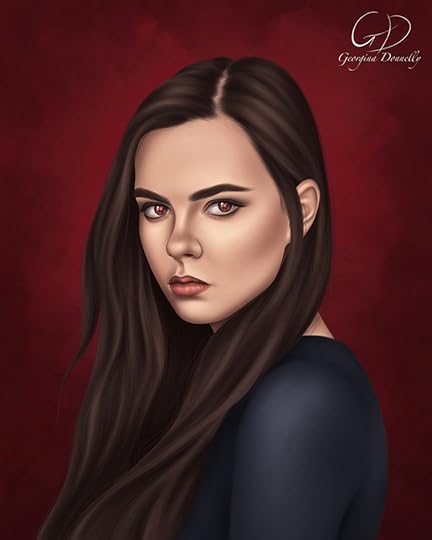 Katy Porter by Georgina Donnelly
Katy Porter by Georgina DonnellyCommission Georgina on Insta: https://www.instagram.com/georginadraws/
May 1, 2025
Author Spotlight: DAJ2020
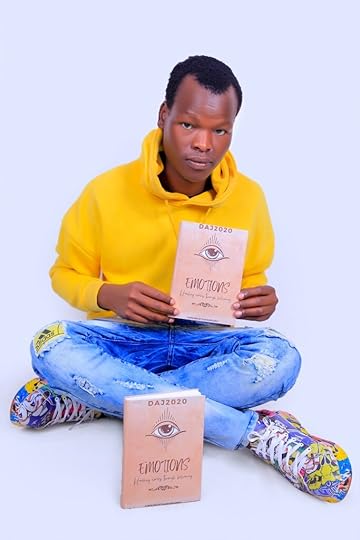
Drici Amos James (he/him), popularly known as DAJ 2020 in the literary world, is an echo of the ghetto’s voice, hope and believe to the world. His indelibly rich, firm and deep roots proudly sprout from the slums of Africa. Born and raised in the Pearl of Africa, East Africa, he is the multi-talented and multi-award-winning author of “Emotions”, which earned him the moniker “God of Poetry” for his poetic genius.
A rare creative gem of light and brilliance who’s passionate about the act and art of creation, he’s a self-taught creative force and a self-published author, poet, model, artist, writer and publisher. Art has always been his oxygen of survival and a clay of redemption since puerility. An arsenal and an avenue that he artistically fuses to remember and surrender. Let’s roll.
Author Links:
Emotions Amazon link: https://a.co/d/8LyMw9n
Wattpad:
Instagram: @daj_african_ug
Threads: @daj_african_ug
Twitter (X): @dajmatic
TikTok: @daj.african.ug.da
Music You-tube: @DAJ2020
Snapchat: @dafrican6
Pinterest: pin.it/1QXGfvdSl
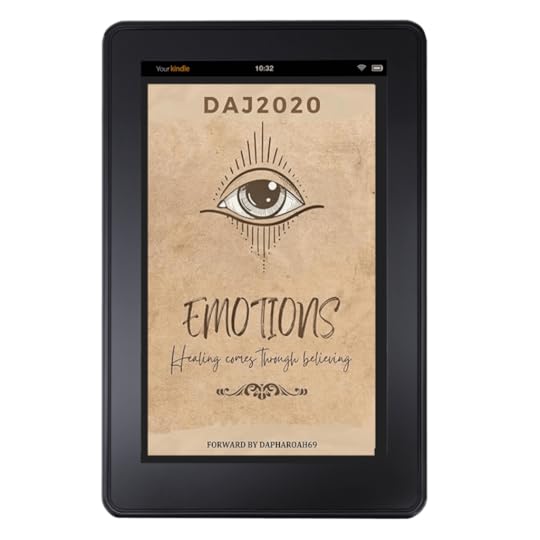
Let’s talk about your poetry. When did you start writing poetry, and what (or who) inspired you to begin?
I started writing poetry in my primary one back in 2006. I was formally introduced to poetry by my class teacher Miss. Catherine. She made the whole class to stand up and recite the poem before the class and then after we had to write our own poems which she pinned on the class walls with marks out of ten. She kicked started my love for poetry and since then have been an avid reader, writer and an addict like Ganja.
My late dad also greatly contributed to me becoming an author. He has a mini home library with lots of books in different genres of literature. As an infant, I remember him giving me children’s books though I could not read nor understand what the words really meant. My favorite books being those of the children’s stories because of the illustrations in them that I loved shading with crayons when alone.
I never wanted someone else to read for me the stories so I had to learn how to read and write English when I joined school. I would spend hours reading the books that interest me and finished them in days making me a lover of libraries and any classic literature available.
I always find peace and joy in knowing something new. I read lots of children’s books, magazines and novels as a teen, which helped to polish and hone my writing skills in my secondary level of Education, where I was elected president of the News Agency Club where I wrote and edited the weekly News that was read on the general assembly for a period of two years. It earned me my first writing certificate.
I resumed writing poetry and other genres of literature during the global COVID-19 pandemic was when I started sharing my poems on Wattpad instead of procrastinating my author journey.
I grew a huge fanbase on the writing app from different countries and continents. Starting from the Caribbean islands in Jamaica, to Egypt, Ghana, Nigeria, Brazil, USA, India and many more. My journey to self-publishing my debut poetry collection was due to the high demand to have my work on the bookshelves by my fans. Emotions was written in the loving memory of my late dad and released as a tribute to his eighteenth death anniversary in 2023.
It has won twenty-eight plus awards from the award-giving communities on the platform. It was on this app that my artist vision was spotted, groomed and nurtured by the multi-award-winning, Amazon and Barnes and Noble.com Top 100 bestselling author of “Call Her Queen Hatshepsut” and “The Law of Beasts” vampire series DAPHAROAH69 who wrote the Foreword for the book.
“Emotions”, was warmly received in the UK, Germany and USA, selling multiple copies on the official date of release earning a five-star review on Amazon for its emotional candor. Its now available on all digital book stores online, libraries and in paperback format for print worldwide. I’m living my childhood dream.
Your debut poetry collection, Emotions, is a multi-award-winning book with themes of pain, loss, growth and victory. Can you tell us about each of these themes and how they speak to you as a poet?
Each of the themes have written about in my debut collection speak volumes to me as a poet, artis, model, writer and publisher in various ways and aspects of life.
The poems in each theme strives to clearly explore the underlying emotions within each one of us. Most of the poems were written from personal experiences. I believe my author journey is as unique and remarkable as my life’s story.
The themes I tackled in this poetry collection basically serve as a beacon of hope and light from life’s darkness. From the void I rose. I wrote the book with ashes of self-doubt and fear so the themes entail my evolution from my humble beginnings to becoming a multi-award-winning poetic giant. From winning POET OF THE YEAR from the King awards in 2020 and God of Poetry award in 2021 from Banana Awards.
The themes break down my journey from all the emotions that I have ever felt, experienced and conquered.
Pain: It has triggered a significant change and growth in me. Have survived the worst of times and pain has been a master teacher that guides and redirects my back to my authentic self when I go astray.
Loss: It taught me how to value and leave in the present moment and to surrender what I have no control over like death of a loved one.
Growth: Have grown to conquer my fears and doubts. I have learnt to believe and trust in my institutions and to careless about people’s opinions about me.
Victory: This is self-explanatory because from the void I rose. At the start of my journey and career nobody really believed in me and my talents and gifts but now many aspire to be like me because I didn’t give up no matter the criticisms I received from friends, family and teachers. It’s my relentless determination to win that has brought me this far. Gratitude is a must.
Some readers may not be familiar with East African poetry and literature, so can you tell us a little bit about that, and how do your poems fit in the wider poetry traditions in East Africa?
East African poetry and literature is the same as any other literature but I think what differentiates it from the rest is the genius of the African writers, authors and publishers who tell the African stories from an African point of view and perspective as it is supposed to be told. I give credit to the founding fathers of African literature like Chinua Achebe who knew that a half-baked book would not achieve the desired goal if not rooted or based on truth, honesty and bravery. They called a spade a spade and not a big spoon. I’m walking in the footsteps of those who paved the way and raised the bar.
Being a proud son of the African soil and a black indie author living in East Africa, I think I know what message my people and continent need to hear, since my poetic eyes can bear witness to what is transpiring in these countries and region since their attainment of Independence from their colonial masters to the hustle and bustle of nation building and development. My poems echo the socio-economic, political, social and religious paralysis of the African continent as a whole. I’m a global citizen with no boundaries, and so are my poems. My poems embody the rich spiritual DNA of my people, ancestral knowledge, traditions and cultures thus fitting perfectly in the wider poetry traditions in East Africa.
How are your poems influenced by your birthplace?
I’m a mouthpiece for my birth place. My poems are generally influenced by my birth place because of the rich cultural heritage of my people, families, music, beauty, history, philosophy, beliefs, marriages, social norms and unique ways life. I was born and raised in the ghetto by a single mom of six siblings has also kept my vision and focus alive setting me apart from the rest.
In the ghetto where I come from, they prefer to call me a “Gift to the 21st century” for my vocal pieces of work which speak the minds of the common people. Poetry to me feels like am talking to my own self yet still being understood by those at the same wave length as me. I write to see, seek and feel.
I draw my inspirations from within and the world around me. I believe art speaks and reveals itself to an artist. All a poet has to do is to listen to the voice within them and write whatever its tells them to as it is without addition or subtraction.
I deeply resonate and acknowledge my ancestral roots and messages in all my poems. Without the influence of my birth, I might not have been a poet or writer at the first place. My birth place gave me the blue print of my originality. I know and have read many poets and poetesses who write good poetry but none can write like me and that’s what sets me apart and makes me special amongst the pack. I look ahead and try to explore themes and realms many are afraid to tackle. My poetry is unapologetically raw because I’m a firm believer that a poem a day keeps the nation awake. When truth strikes my poetic nerves, I let it speak its verses through me.
What is next for you after “Emotions”?
My second poetry collection titled “THE NAKED RACE” is currently undergoing editing and formatting for release this year in December. It’s my birthday gift to myself and my loyal fans. The book speaks volumes about the twenty-first century doctrines that span from religious paralysis to the common talks of the city. Themes like Love, politics, death, depression, trauma, spirituality, African heritage, religions, governments, philosophy and much more.
The book seeks to awaken and enlighten I hope it will deeply resonate with the human spirit and elevate them higher to a greater conscious and higher vibrations.
I’m also working on my first children’s book titled “UNCLE MOS MOS” which tells children stories from Africa and beyond and am supper excited to give back to my young self. The short stories in the debut collection contain mainly African bed time stories and tales aimed at entertaining and edutaining.
Of course, I love kids and dream of having many of them one day. It was inspired by my niece Andruga Nilsa Meave and I dedicate it to her. I dream of starting a merch and focusing on building my audience and establishing own my author brand beyond the borders of Africa since I’m a self-taught multi-award winning independent literary force and a self-published author and publisher.
Beyond the books, am also an emerging actor and director working on my first short film titled “THE LOST COIN” which was written, directed and acted by me. Acting is my new way of telling my stories as viewed and written from my own perspective. This story brings the struggles of a ghetto youth to light. The film was shot and edited by Charity James, a promising film maker and editor from the ghetto.
My first single song will also be released later on this year since am back in studio and recording new music with various artists, music producers and video directors for my debut music album.
I always tell myself “Greatness lies above the noise”. This is just the beginning for me. I believe the future is brighter for me and my ink if given a chance. I’m not here to proof my self and worth to anybody but to myself and my unceasing passion for my craft. I do this for me, myself and I because I believe in me. I am my biggest fan and cheerleader.
Share some reader responses to Emotions and let us know what they think! What has your favorite feedback been, and why?
Praise for Daj2020s ‘Emotions.”
“From Into You:
Mend my broken pieces. Baptize it with true love.
Enemy: You were a poisonous snake in the dark.
A sweet, flavored venom I drank.
Dude, you have this 6 ft 5-inch brotha in Miami, Florida screaming! I arrive at the moment I realize that DAJ2020 is a poetic genius. I never cried from reading someone else’s poetry, but “Emotions” took me through it! I laughed, sobbed and cried like a baby, especially with his “Father” poem. My dad died before I could find him. Great job. Perfect score of 10/10.”
A review from best-selling author THE KING OF EROTICA, DAPHAOROAH69. GOULDS, MIAMI, FLORIDA, USA.
“I’m that type of person who recognizes and comments when I see some great works. It’s emotional. I’m not the type of girl who sheds tears but trust me. I don’t even like my dad, and this poem, I want to spend my life with him.”
ASHANIE_ASH, AUTHOR, JAMAICA.
“You took the step and that’s the first start to believing in you. Your technique and flow is wonderful. Don’t ever think you’re mediocre. You’re darn good!”
BIRDEYZE, AUTHOR, JAMAICA.
“You are fabulous at what you write! Keep up the hard work and wonderful poems!”
DREAMINOFSJ, AUTHOR, USA.
“I cried. Thanks for writing such beautiful masterpieces. Your work’s worth it, keep making masterpieces. God bless.”
DARIEL CLAIRE, AUTHOR.
“This writer is so talented…. I was blown away by his work. I fell in love with each verse of each poem I read. I could relate to every line, and I literally shed a few tears. I loved everything about your work. Your words played on my emotions, and I applaud you for that. Great job.”
Review, From BANANA AWARDS (1st place)
All feedbacks are great, bad or good, but my all-time favorite feedback was from a fellow writer and a fan from Jamaica who commented and said, “I’m not the type of girl who sheds tears but trust me. I don’t even like my dad, and this poem, I want to spend my life with him.” when she read my poem titled “Father” which I had written and dedicated to my late dad.
Why her feedback? Because it made her to restore, reunite and love her living dad even more and she says she now wants to spend her life with him. I feel blessed that my words can act as a healing balm to souls and mend them. I’m just the bridge between the missing link. The book’s subtitle says, “Healing Comes through Believing.” I believe there is a poem and a message for each every and everyone of you in my debut collection.
 Get now: https://a.co/d/8LyMw9nLike This? Try These!
Get now: https://a.co/d/8LyMw9nLike This? Try These!
April 30, 2025
Audio Release for Yelen & Yelena Chapter 14: Dark Snows
Part 3: The Rot
Velna flees the village after a single act of defiance brings the soldiers down on them, but what is waiting in the forest is worse… Stick around to the end as Worldbuilding Part 3 is at the end of this chapter, and I talk about how I went about constructing my fantasy religions for this novel.
I’ve included the transcript for the Worldbuilding section below in this post.
CWs: eviction, animal death (an owl), mycelial body horror, fear of drowning/freezing to death.
Listen now read alongMusic Credits:
Kevin MacLeod (incompetech.com) Licensed under Creative Commons: By Attribution 4.0 License creativecommons.org/licenses/by/4.0
Intro/Outro: Quinn’s Song: The Dance Begins
Soundtrack: SCP-x6x, Giant Wyrm
Worldbuilding (3)I think when I was trying to come up with fantasy religions and fantasy aspects and spirits and stuff, I think I came up with Yarash first, who has absolutely no role in the book whatsoever now, but that’s just how it goes, isn’t it.
I was playing with ideas to work out — (well apart from literally just now, that’s the only time you see [Yarash], I think). I was playing with ideas to work out how a fantasy religion would have developed, so I ended up doing a tumblr post on this, or a couple of tumblr posts on this, which went my closest to viral on tumblr that I’ve got. Basically, I was talking to my husband about this idea of a god with a necromancy cult and the cults are driven off into the wasteland or something. And that’s how Yarash becomes the spirit of midwinter. And he was like, yeah, that’s not how religions work, though, is it?
And he was right. Religions are not based on a single static event and beliefs. Folk beliefs are not really based on single static events, even though they may claim that they are. A religion is a moving vehicle of many parts and layers, and it’s also a living, breathing thing that changes and shifts over time.
So what sounds more real than some necromancy cult is, OK, a god whose followers wanted to raise the dead at midwinter festivals, right? And they couldn’t do it. So they used puppets instead as representative of the dead. And then as magic progressed, they actually did manage to make the dead reanimate for short periods. And now you have your first major splintering of the adherents of this religion, and a rupture between the conservatives who say puppetry is the only right way to do these rituals because that’s traditional, versus the newer group who say that necromancy was the intention behind the puppets. So therefore you should now switch to necromancy.
And the two factions fight about this internally for a while, probably forever, but it comes down to who is holding secular power at that time, and what they think of the necromancy magic.
So if you have a ruler of some kind who sees the value in necromancy, you’re going to see that religious faction rising above the puppetry one. And this is where you’ll get discourse.
In this case, let’s call it the ‘Old Bones’ discourse, where the puppets are referred to as the Old Bones, the traditional way to conduct these rituals.
And when popular opinion or the political climate shifts, you may see a suppression of necromancy and an uplifting of the puppets as the only true
way to do these rituals. And necromancy might even be banned for a time. But this is like a seesaw, right? It goes back and forth until things settle down. Maybe necromancy is normalised now in other parts of society. And so the rituals go back to puppets to differentiate the religious rites from the more mundane uses of necromancy or the more political uses of necromancy.
And you’ll find signs for like chiropractors having a sign of a puppet hanging over the door because the puppets represent the old bones, and that’s now blended with modern popular understanding, and so you end up with these festivals perhaps divorced completely from their original religious ritual, and maybe nobody even really believes in this god anymore, but they still have puppets as a traditional part of a midwinter festival.
And that’s how you get puppets in midwinter.
And also, that’s where necromancy comes from.
But your protagonist may not know any of that history at all. Because how many people actually know the ins and outs without misinformation, without bits and pieces of folklore getting… mangled horribly and mixed up with mainstream religious ideas?
How many people actually know actual Medieval Christian theology, for example, around the 12 days of Christmas?
How many average people on the street know you know can name 10 saints days in the Christian calendar? If you’re in a Catholic country, or an Orthodox country, yeah I reckon people could do that. If you’re in a different country where things have gotten divorced from their original context, how many people could actually do that, even if they say that they’re a Christian, they come from a Christian background; maybe they’re a lapsed Catholic or something….?
So does your protagonist have any kind of understanding of that?
But you need to know that because it’s just more interesting if you’re going to write about somebody having faith and somebody not having faith you know,
you need to know the ins and outs of it.
Anyway, I think that feels more real and dynamic as a faith system, so you can start to hang other things off it.
And that’s how I approach myth-making. It’s not the only way, it’s not the “right” way, I’m just saying that’s how I approach it, and I always try to represent different levels of faith in these fantasy scenarios, and have different angles on it so that I can kind of make it feel a bit deeper, a bit richer, and a bit more realistic.
So Yelena is incredibly pious and very faithful to her chosen spirit, but she’s not thinking about the afterlife. She’s very focused on finding joy in the here and now. So she picks a spirit that is all about that, and all about finding pleasure and all about giving pleasure to other people, crucially, because Erish is about mutual giving and receiving of things. Not just giving and receiving of orgasm, but giving and receiving of pleasure.
And yes, pleasure is a euphemism in this case for orgasm or for sex in the fantasy culture that I’ve created, or in Yelena’s culture specifically, because there are people who pass through that hostelry who wouldn’t know what Erish worship was. And people in Northport probably don’t know what Erish worship is. Like the sailors, they have no idea that that’s what she’s doing, you know, because they’re all about their pleasure, and they have very firm ideas about what their pleasure entails.
But for Yelena, like, Velna is basically a pillow princess. So she’s not reciprocating. She doesn’t particularly like that, I don’t think. But Yelena gets pleasure in making Velna come, right, so she enjoys that aspect, and so therefore the giving and receiving of pleasure is mutual, she’s just getting that mutual pleasure in a different way. Just because she doesn’t have an orgasm every time doesn’t mean that she isn’t engaging in Erish worship, right, so that’s that’s the whole thing about Erish.
Velna isn’t religious, doesn’t believe in a lot of things, and then has this really disturbing experience in the woods. And not to victim blame with Velna, but I think her agnosticism about spirits has really tripped her up here, because she doesn’t have as strong a faith in something like Yelena does. And so there’s nothing out there to listen to her to begin with. There’s nobody out there who knows her. And so the prayer goes to literally whoever is listening to be ignored, or not, as they please. And so that has knock -on consequences.
Whereas Yelena’s devotion to Erish also has some knock-on consequences, but in slightly different ways.
And so those are kind of elements that I’m playing with, that I’m kind of leaving up to you to intuit, and, you know, like play with in your own kind of… way as readers, I guess, and to think about. And so these are elements of fantasy religion building that I just thought I’d share with you for now, for this chapter, and I’ll save the rest for another time.
If you do want to know anything specific just reach out to me on Bluesky or message me on Ko-Fi; let me know. Drop a comment on cmrosens.com and let me know if there’s anything that you’d like me to maybe write a longer blog post about, or do a special episode on.
In the meantime, you know the drill.
Drop me a tip!
Buy the book!
Join my Ko -Fi!
Don’t forget to check out my author spotlight series and find more amazing books to read by other amazing authors.
See you next time! Bye for now.
April 25, 2025
Author Spotlight: Emma Murray

Emma E. Murray (she/her) explores the dark side of humanity in her fiction.
Her work includes Crushing Snails and When the Devil.
When she isn’t writing, she loves making up fantastical worlds with her daughter, playing D&D and retro video games, and hiking.
You can find out more at her website EmmaEMurray.com
Author Links:
Website: EmmaEMurray.com
IG: @emmaemurray_
Threads: @emmamurray_
Bsky: @emmaemurray.bsky.social
Preorder The Drowning Machine: undertakerbooks.com/products/the-drowning-machine
Shoot Me In The Face On A Beautiful Day: Add to Goodreads

Can you talk us through the process of ordering the collection The Drowning Machine and Other Obsessions, and the selection of the stories in each section?
I’d say the three sections are basically divided into parenthood, naivety/loss of innocence, and obsessions, but besides ordering it in that way, there is also a flow from horror involving the earliest years of life to childhood to adolescence, and finally, to old age and the horrors of looking back with regret and even dementia.
This flow through a lifetime helps pull the three sections together, with echoes of details and themes appearing throughout the collection, tying certain stories together in a way and building a cohesion so it reads like one piece instead of a bunch of individual stories just set next to each other.
What leads you to write about the themes in the collection – obsession and grief in particular, and the different facets of these?
This collection was very much inspired by my struggles with OCD. By delving into my worst fears and intrusive thoughts, I was able to not only explore the horror and sorrow of these experiences, but it was also very cathartic to really dig my nails into those thoughts and work through some of the emotions connected to them.
What about short fiction led you to choose this form as the vehicle for your stories and themes? Do you think any stories would work in other formats?
I love short stories! I love reading them, writing them, everything! I think they have this way of being able to hit a topic in this intense way that longer works might struggle with; however, I did recently finish a folk horror novel that is essentially an expanded version of the ideas and some of the characters in one of the stories, so I needed to get a little deeper into that. So I do think some of these themes and even storylines could work in other formats, particularly short film. I’d love to see one or more of these stories made into a short film someday.

Your latest book Shoot Me in the Face on a Beautiful Day is also coming out soon! Will there be themes within the book that readers will recognise as being part of your ‘author brand’ (or recognise from the short story collection)?
Yes, it’ll be out August 26, which feels both far away and very soon. Any readers familiar with my previous work will certainly see the familiar themes of grief, motherhood, and realistic yet extreme violence in this novel, which are all 100% part of my “author brand”
What inspired Shoot Me in the Face on a Beautiful Day, and what can readers expect from this book?
I had two main inspirations for this novel. The first being my biggest fear: home invasion. I’ve really wanted to write some terrifying home invasion killer scenes for a long time, and when the ideas for this book started to come together, I realized I finally had the story to dig into those darkest fears. The second inspiration was that I’m a survivor of domestic violence and I wanted to write a story about the complicated nature of those relationships. Those two ideas came together in this very unsettling novel that follows dual storylines about these ideas that come together in some shocking ways.
Do you have any themes or ideas you want to explore further? What’s next for your writing?
I am forever obsessed with exploring the psychology of grief, cruelty, and people pushed to their limit, so you’ll definitely find that in all my work. As for what’s next, I have a folk horror novel going on submission very soon and I’m drafting another horror novel that pushes into taboos to better understand them, this one about family dynamics and murder, so hopefully both of those will be out in the near future!
Like This? Try These:


